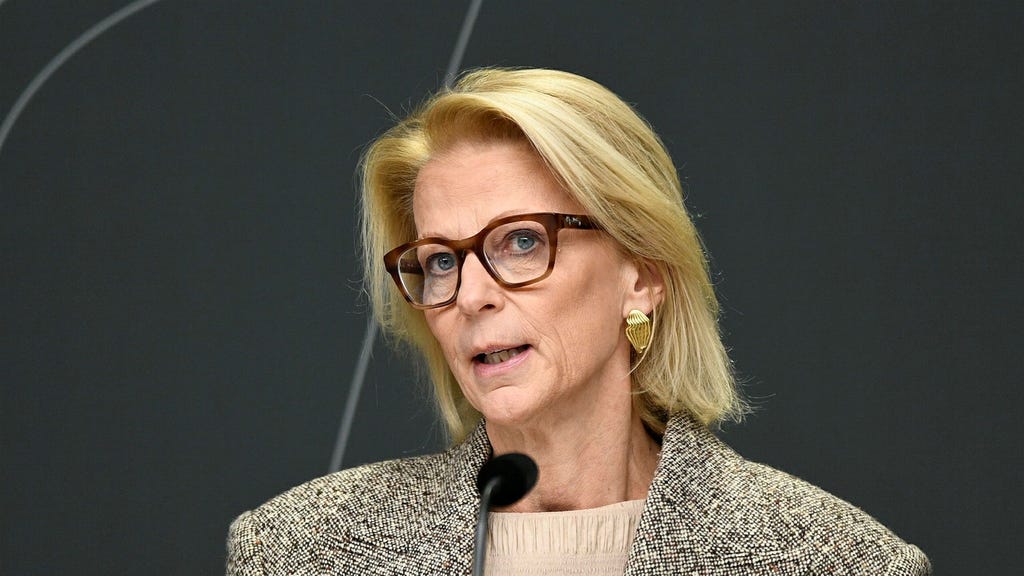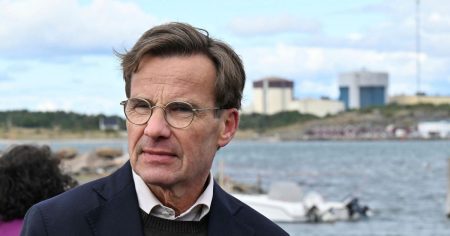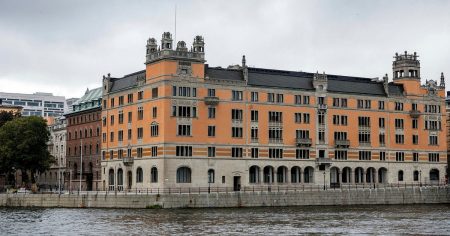Sweden is embarking on a substantial investment in new nuclear power, a project estimated to cost 400 billion kronor for the construction of four to five large-scale reactors. This endeavor has sparked debate among political parties regarding its financing, particularly its alignment with the nation’s fiscal policy framework, which emphasizes maintaining a low national debt. While a majority of parties support this fiscal conservatism, the Green Party and the Left Party advocate for a more flexible approach, potentially involving greater government borrowing to fund such crucial infrastructure projects. The central question revolves around how to reconcile the substantial financial demands of this nuclear power expansion with the prevailing commitment to fiscal prudence.
Finance Minister Elisabeth Svantesson has stated that the nuclear power investments should fall within the existing budget framework, rather than being treated as exceptional expenditures like Sweden’s aid to Ukraine. The government is exploring a mechanism whereby the state guarantees loans for the project, leading to short-term borrowing that would be repaid. However, the scale of the investment, potentially reaching 100 billion kronor in some years, presents a significant challenge. This raises questions about whether the project will necessitate other budgetary adjustments, such as increased taxes or cuts in public spending, to offset the costs while maintaining the desired low national debt. Svantesson emphasizes that economic growth would create more fiscal space for investments and that prioritization within the budget would be essential. She also highlights the government’s track record of tax reductions, suggesting that this approach will foster growth and create additional resources for various sectors.
A government-commissioned report outlined a proposed financing model for the new nuclear power program. The program envisions four to five large-scale reactors, generating 4,000–6,000 megawatts of power, with a total estimated cost of 400 billion kronor. The proposed financing structure involves the state providing 300 billion kronor in loan capital, while private investors contribute 100 billion kronor in equity. To further mitigate risks for investors, the report recommends a 40-year price guarantee agreement, ensuring that nuclear power companies receive at least 80 öre/kWh from the state. Additionally, a risk- and profit-sharing mechanism would be implemented, contingent on a market valuation of the project company two years after the reactors become operational. This complex financial arrangement aims to balance the state’s role in supporting this critical infrastructure project with the need to attract private investment and manage financial risks.
The debate surrounding the financing of new nuclear power highlights the tension between Sweden’s long-term energy goals and its fiscal policy constraints. While the majority of political parties agree on the importance of maintaining a low national debt, the significant cost of the nuclear power program necessitates careful consideration of funding sources and potential trade-offs. The government’s proposed approach, involving state-guaranteed loans, aims to facilitate private investment without directly increasing the national debt in the long term. However, the scale of the project raises concerns about the potential impact on other areas of government spending or the need for revenue increases. The discussions surrounding this investment underscore the complex balancing act required to achieve both ambitious infrastructure goals and fiscal sustainability.
The Finnish experience with the Olkiluoto 3 nuclear reactor serves as a cautionary tale, illustrating the potential for delays and cost overruns in such complex projects. Originally scheduled for completion in 2009, the reactor did not become fully operational until 2023. This protracted timeline and associated cost increases underscore the inherent risks and uncertainties involved in large-scale infrastructure projects like nuclear power plants. While Sweden is aiming to avoid similar setbacks, the Finnish example serves as a reminder of the importance of careful planning, rigorous oversight, and realistic cost estimations. The success of Sweden’s nuclear power program will depend on its ability to manage these challenges effectively and maintain fiscal discipline throughout the project’s lifecycle.
The ongoing debate underscores the significant financial and political challenges associated with Sweden’s ambitious nuclear power investment. Balancing the need for a stable energy supply, the commitment to fiscal responsibility, and the complexities of financing such a large-scale project requires careful consideration and potentially difficult choices. The government’s proposed financing model, involving state-guaranteed loans and a risk-sharing mechanism, aims to address these challenges, but the ultimate success of the program will depend on careful execution and ongoing adaptation to potential unforeseen circumstances. The Finnish experience with Olkiluoto 3 serves as a stark reminder of the potential pitfalls and the importance of meticulous planning and risk management in such endeavors.














